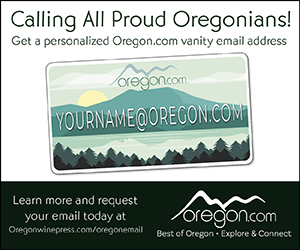Lisa McCracken: What’s with the American aversion to roundabouts?

Here in America, we have a history of bucking any change that has even a remotely European metric, no matter how promising it might be. And yes, that includes the metric system, used virtually everywhere else in the world.
The roundabout is the most recent bane on the American commuter.
The Oregon Department of Transportation and city of McMinnville are planning a roundabout at the intersection of Highway 18 and the Lafayette Highway that will, hopefully, come to also include the Cruickshank Road interchange. And the opinions have already begun to fly.
What common arguments do we see as a reaction to the construction of a new roundabout?
Let’s start with, “I don’t like them; just put in a stop light,” which would surely slow traffic to a stop in the area. Another calls for construction of an overpass, which would cost millions and pose the risk of collapse during the long-overdue Cascadia earthquake.
No one seems to argue a roundabout would be unsafe or unworkable, just that it has a funny “feel.”
The simple concept behind a roundabout is “yielding with courtesy,” with emphasis on the “courtesy.”
According to the Insurance Institute for Highway Safety, roundabouts reduce injury crashes by 75%, compared to stop signs and traffic lights. And this intersection is one of the most dangerous we have, triggering more than a dozen fatalities in the last decade alone.
Increasing traffic and ever-growing anger have contributed to a greater number of accidents this past decade, as noted in the Sept. 26 News-Register. Installation of a roundabout would all but eliminate the left-hand, right-angle and head-on collisions currently occurring at the intersection.
The drawbacks of roundabouts are driver uncertainty about yielding, too many merge points and a temptation to cut corners. That can produce some low-speed rear-enders and side-swipes, posing little risk of serious injury and virtually none of fatal injury.
All of this is totally avoidable with a brief learning curve — you have to yield on entry, but enjoy the right of way on exit — and the display of a bit of patience and courtesy. Besides, our roundabout wouldn’t even begin to rival the complexity of European marvels like the one at the Arc de Triomphe in Paris.
Change is difficult, but the discomfort of this change pales to insignificance in comparison to that of the current litany of injuries, deaths and funerals. We all see the reports and cringe over them.
Roundabouts are the safest and easiest solution in response to this ever-growing problem. The plan here calls for a large roundabout that serves not only to keep traffic moving, but to keep it moving safely.
If it really wanted to stir anger over changing traffic structure, ODOT could offer the option of a jug-handle intersection, common on the East Coast. That would surely blow some minds in this area — and make a roundabout seem a lot more palatable by comparison.








Comments
fiddler
Roundabouts make a lot of sense. I've often marveled at the stupidity of having to stop and a four-way stop intersection at 2:00 a.m. when there is no other moving vehicle within a mile.
Perhaps it's budget. Our roads are in dire need to repair, so I doubt there's $$ available for roundabouts. First things first I guess....
Bizzyditchaz
Looks like the recent traffic circles are navigated just fine on Hill/Wallace and Hill/Baker Creek. Safe and economical! What a concept!!
Bizzyditchaz
Looks like the recent traffic circles are navigated just fine on Hill/Wallace and Hill/Baker Creek. Safe and economical! What a concept!!